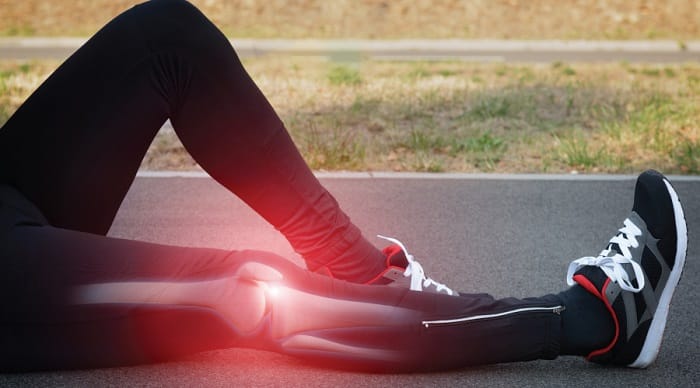
Chondromalacia (Runner's Knee)
Chondromalacia, better known as runner's knee, is an injury condition that affects the cartilage between the kneecap and the femur. Chondromalacia (runner's knee) describes a cartilage injury where the cartilage breaks down and becomes soft, as well as irregular at the edges. The condition thus affects the cartilage at the back of the kneecap (see MR images further down in the article) - cartilage that acts as a natural shock absorber when we run, jump and similar activities which, with overuse, can lead to the breakdown of the cartilage. A differential diagnosis for chondromalacia is patellofemoral pain syndrome, which differs from the former in that cartilage damage has not been demonstrated. The diagnosis often affects young athletes, but can affect people of all ages - including older people who overload their knees beyond their capacity.
The Pain Clinics: Our Interdisciplinary and Modern Clinics
Our clinic departments at Vondtklinikkene (click here for a complete overview of our clinics) has a distinctively high level of professional expertise in the investigation, treatment and rehabilitation of knee diagnoses. Contact us if you want the help of therapists with expertise in knee pain.
Causes of chondromalacia (runner's knee)
The condition occurs due to repetitive physical strain over time without sufficient recovery or supporting muscles. Incorrect positions in the feet, knees, femurs and hips can also lead to improper loading of the knees. Over time, the cartilage will wear down so that it becomes rough around the edges instead of its normal smooth appearance. Many people are surprised that such strain can lead to cartilage damage over time without having had any direct damage or trauma to the knees. There are five main reasons why one develops running skills:
- Overuse: Too much running, jumping and activity with a high load on the knees - without sufficient rest and training of nearby, shock-absorbing muscles (see exercises here ). It is from this type of cause that the condition got its name - runner's knee.
- Patella malposition: If a kneecap that is out of position cannot be protected by the cartilage in the normal way. Some people are born with malposition of the kneecap.
- Weak supporting muscles: The muscles in the hip, calf and thigh are all very important when it comes to preventing knee problems - including runner's knee. These muscles help to support and relieve the knee and ensure that it stays in the correct position. If they are not strong enough, this can lead to the kneecap being misplaced under load, which leads to increased pressure against the cartilage and faster breakdown of this. This breakdown can eventually cause pain.
- Knee injury or trauma: An injury to the knee, such as an accident, fall or direct blow to the knee, can all cause the kneecap to shift out of its normal position. This can naturally also lead to damage to the cartilage behind the kneecap.
- Muscle imbalance: Strong thigh muscles combined with weak calf muscles can also be a cause of misplacement of the kneecap. Such an imbalance will be able to pull or push the kneecap out of its normal position.
Relief and Load management at Løperkne
En knee compression support can provide both relief and increased stability to the affected knee. The support works by also contributing to increased blood circulation in the knee - which provides increased access to nutrients and thus faster healing.
Tips: Knee compression support (The link opens in a new window)
Click on the image or link to read more about the knee compression support and how it can help your knee.
Related article: - 4 good exercises for sore feet!
Further reading: - Sore foot? You should know this!
 Follow Vondt.net on YOUTUBE
Follow Vondt.net on YOUTUBE
(Follow and comment if you want us to make a video with specific exercises or elaborations for exactly YOUR issues)
 Follow Vondt.net on FACEBOOK
Follow Vondt.net on FACEBOOK
(We try to respond to all messages and questions within 24-48 hours. We can also help you interpret MRI responses and the like.)







Leave a reply
Want to join the discussion?Feel free to Contribute!